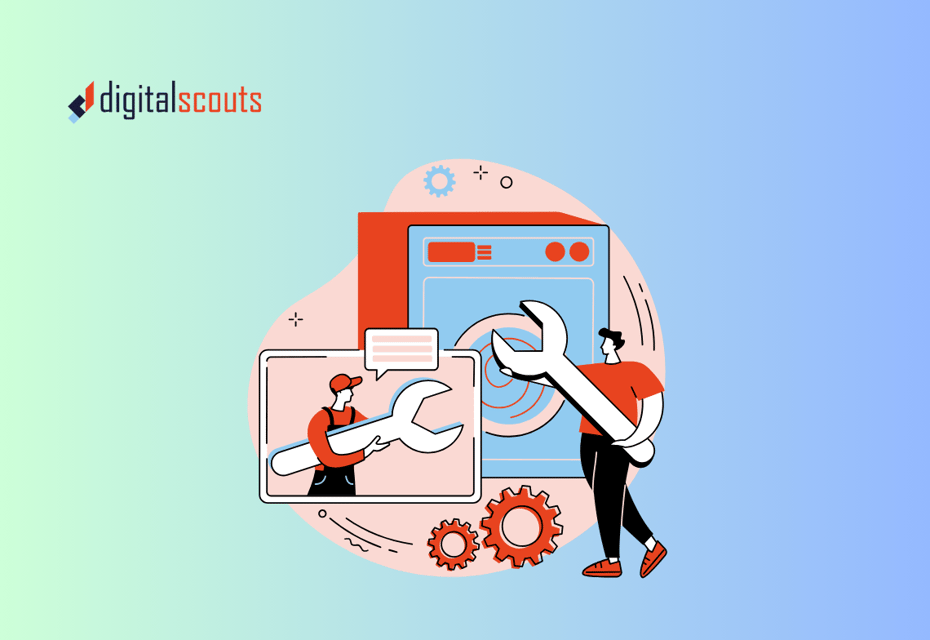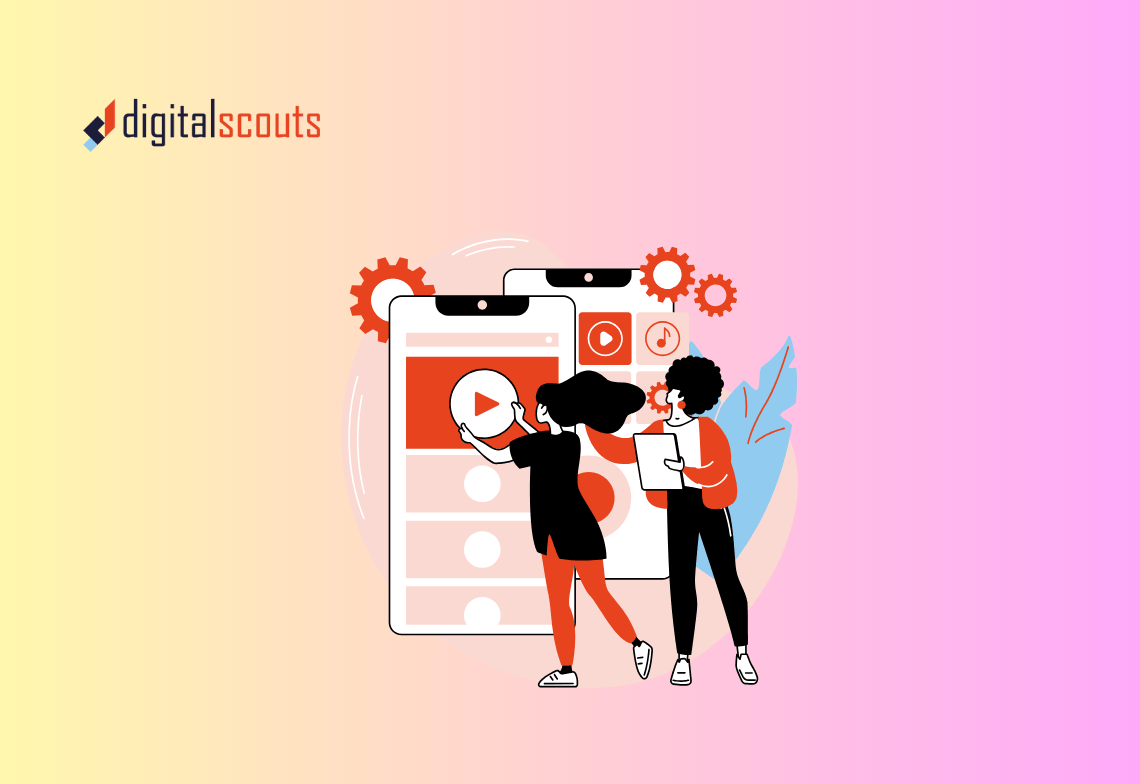B2B growth depends on one thing above all — consistent, qualified pipeline.
Some companies build it through inbound marketing, others through outbound prospecting. But the most successful organisations know it is not an either-or decision. The real advantage comes from balancing both.
Inbound creates awareness and interest. Outbound converts that interest into action. Together, they form a complete demand generation system that attracts, engages, and converts the right buyers efficiently.
This guide outlines how to build a balanced inbound and outbound strategy, with clear steps for marketing, sales, and operations teams to create predictable B2B pipeline growth.
Why Inbound and Outbound Both Matter
Inbound and outbound each have distinct strengths — and gaps. When combined correctly, they fill those gaps for one another.
Inbound marketing
Inbound marketing attracts prospects through valuable content. Blogs, videos, and SEO draw your target audience in when they are researching solutions.
Strengths
-
Builds long-term brand authority
-
Generates leads passively over time
-
Scales efficiently through automation
Limitations
-
Takes time to produce results
-
Relies on organic visibility and trust building
-
May not reach specific target accounts quickly
Outbound marketing
Outbound marketing reaches out directly to prospects through email, phone, or targeted advertising. It accelerates engagement and drives conversations faster.
Strengths
-
Delivers immediate results
-
Targets high-fit accounts precisely
-
Allows message testing and personalisation
Limitations
-
Requires manual effort or automation investment
-
Can fatigue audiences if poorly executed
-
Often lacks long-term brand impact
When inbound and outbound strategies work in tandem, inbound builds trust and visibility while outbound capitalises on that awareness to drive pipeline.
The RevOps View: A Unified Demand Engine
RevOps brings structure to how inbound and outbound work together.
It connects the technology, data, and processes that both teams rely on — marketing generating demand and sales converting it.
Why RevOps alignment matters
-
Shared visibility across campaigns and pipelines
-
Unified reporting on lead sources and outcomes
-
Automated lead routing and follow-up between teams
-
Accurate attribution for budget and performance
By combining inbound and outbound under a shared RevOps model, you create one continuous funnel instead of two disconnected efforts.
Step 1: Start with Audience Alignment
Inbound and outbound both depend on knowing who you want to reach.
Before choosing tactics, define your Ideal Customer Profile (ICP) and buyer personas clearly.
How to align your audience
-
Identify firmographics such as industry, size, and geography.
-
Understand buyer roles — who influences, who decides, and who uses.
-
Map pain points to both inbound content and outbound messaging.
-
Confirm data sources for finding and segmenting your audience.
Inbound can target the broad audience searching for solutions. Outbound can focus on a narrower group of high-fit companies ready for outreach. Both share the same foundation.
Step 2: Define Goals for Each Channel
Inbound and outbound play different roles at different stages of your funnel.
Inbound goals
-
Build brand awareness
-
Attract and educate new audiences
-
Capture early-stage interest through content and SEO
Outbound goals
-
Generate meetings and qualified opportunities
-
Accelerate pipeline for high-intent accounts
-
Re-engage inactive leads or existing prospects
Your demand generation mix should reflect your growth stage. Newer companies may rely more on outbound to fill the pipeline quickly. Mature companies can shift more investment into inbound to build sustainable momentum.
Step 3: Build an Inbound Content Framework
Inbound content fuels your demand creation. It attracts buyers by solving their problems and positioning your brand as the expert.
The inbound content pyramid
-
Top of funnel: Educational blogs, thought leadership, and guides that address pain points and questions.
-
Middle of funnel: Case studies, webinars, and whitepapers that show solutions in context.
-
Bottom of funnel: Product-focused pages, demos, and ROI calculators that convert interest into leads.
AEO-friendly structure
Answer Engine Optimisation (AEO) helps your content appear in AI search results. Use question-based headings such as:
-
What is inbound marketing
-
How does outbound support pipeline growth
-
What is the best demand generation mix for B2B
Structured content makes your inbound strategy discoverable by both human readers and AI-driven search systems.
Step 4: Build Outbound Workflows That Scale
Outbound success depends on timing, relevance, and consistency.
How to design scalable outbound programs
-
Targeted lists: Use CRM data and intent platforms to identify high-fit accounts.
-
Personalised outreach: Write short, value-driven emails based on pain points uncovered by inbound insights.
-
Multi-touch sequences: Combine email, LinkedIn, and phone outreach to improve response rates.
-
Automate follow-ups: Use HubSpot workflows or sales engagement tools to manage sequences efficiently.
Outbound should not feel like cold outreach. When combined with inbound insights, it becomes warm engagement — contacting leads already familiar with your brand.
Step 5: Integrate Data Between Marketing and Sales
Integration is the foundation of balance.
Your inbound and outbound data should flow seamlessly through your CRM to create one unified view of the buyer journey.
What to connect
-
Website engagement and form fills from inbound campaigns
-
Prospecting and response data from outbound sequences
-
Lifecycle stages and lead scores in your CRM
-
Attribution and campaign performance metrics
Why this matters
When inbound and outbound share data, marketing knows which content drives interest, and sales knows which accounts are active.
RevOps can then identify which combinations — such as inbound webinars followed by outbound outreach — convert best.
Step 6: Create Shared Lead Scoring and Qualification
Leads from inbound and outbound should be scored and qualified using the same framework.
How to structure your lead scoring model
-
Fit score: Based on firmographic or role alignment.
-
Engagement score: Based on activity such as page visits, downloads, or email opens.
-
Intent score: Based on behaviour like viewing pricing pages or requesting demos.
When both inbound and outbound leads are measured by the same criteria, marketing and sales can hand off leads confidently without friction.
This consistency ensures that every lead in the system represents real pipeline potential.
Step 7: Align Nurture and Follow-Up Sequences
Not every inbound lead converts immediately, and not every outbound prospect replies right away.
To maintain momentum, create nurture and follow-up sequences that support both.
For inbound leads
-
Automated email sequences that share educational or case study content.
-
Retargeting campaigns to keep your brand visible.
-
Invitations to events or webinars relevant to their interests.
For outbound leads
-
Re-engagement workflows for prospects who did not respond initially.
-
LinkedIn connection requests with valuable insights.
-
Follow-up campaigns triggered by new company announcements or role changes.
Combining nurture automation with human follow-up bridges the gap between first contact and qualified opportunity.
Step 8: Track and Optimise the Mix
Balancing inbound and outbound requires continuous measurement.
Key metrics to track
| Category | Inbound | Outbound |
|---|---|---|
| Top of Funnel | Website traffic, content downloads | Outreach volume, email open rate |
| Mid Funnel | Lead-to-MQL conversion rate | Response and meeting rate |
| Bottom Funnel | MQL-to-SQL conversion rate | Opportunity creation and close rate |
| ROI | Cost per MQL | Cost per opportunity and deal |
How to optimise
-
If inbound leads have high volume but low conversion, improve content targeting.
-
If outbound response rates drop, review messaging or audience segmentation.
-
Test integrated plays — for example, retarget outbound prospects with inbound ads.
Step 9: Align Teams Around Shared Revenue Goals
Marketing, sales, and operations must work as one revenue team.
How to create alignment
-
Hold joint planning sessions for campaigns and targets.
-
Share one CRM dashboard that tracks inbound and outbound metrics together.
-
Establish Service Level Agreements (SLAs) for lead follow-up times.
-
Celebrate shared wins rather than channel-specific results.
A culture of alignment prevents silos and ensures every action contributes to one shared objective — growing qualified pipeline.
Step 10: Build a Continuous Learning Loop
Balance does not mean static. The mix of inbound and outbound should evolve with market conditions and buyer behaviour.
How to create a feedback system
-
Gather sales feedback on inbound lead quality.
-
Review which outbound messages perform best by segment.
-
Analyse content engagement across paid, organic, and email channels.
-
Update playbooks quarterly to reflect what works.
This loop turns data into insight and insight into action. It keeps your demand generation mix responsive and relevant.
Common Mistakes to Avoid
-
Treating inbound and outbound as competing teams
-
Focusing only on lead volume instead of quality
-
Ignoring attribution between marketing and sales
-
Running outbound campaigns without warm awareness from inbound
-
Measuring channels in isolation instead of total pipeline impact
Avoiding these mistakes ensures your mix delivers both reach and results.
Bringing It All Together
Inbound and outbound marketing are not opposites. They are complementary parts of one demand generation engine.
Inbound builds visibility and credibility. Outbound accelerates conversations and closes the gap between awareness and action.
When both strategies share data, metrics, and goals under a RevOps framework, you gain full control over how demand flows through your pipeline.
Digitalscouts helps B2B companies build connected demand generation systems that combine inbound content strategy with outbound execution. Our approach aligns marketing, sales, and operations around shared growth metrics — turning your funnel into a predictable revenue engine.
If you want to refine your demand mix and drive higher pipeline efficiency, our team can help you design a strategy that works across every stage of the buyer journey.
Frequently Asked Questions
About Author
Ashish is a B2B growth strategist who helps scaleups align marketing and sales through Account-Based Marketing (ABM), RevOps, and automation. At DigitalScouts, he builds scalable content engines, streamlines lead flows with HubSpot, and runs targeted GTM programs to drive predictable pipeline. He regularly shares insights on using AI and automation to power ABM and accelerate complex buyer journeys.








